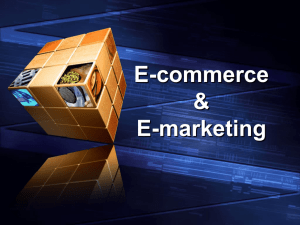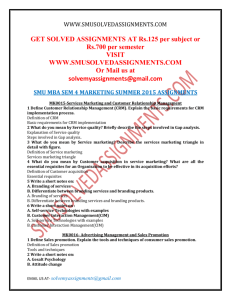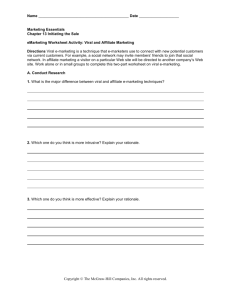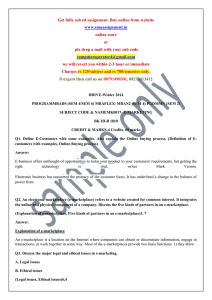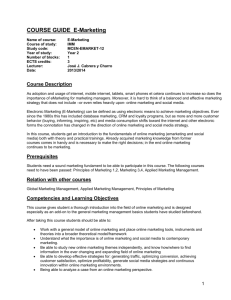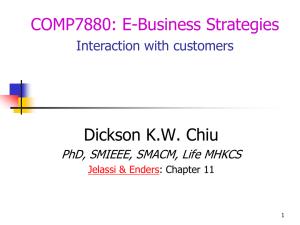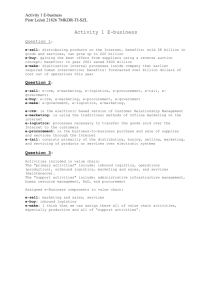Sources must be cited in APA format. Your response should be a
advertisement
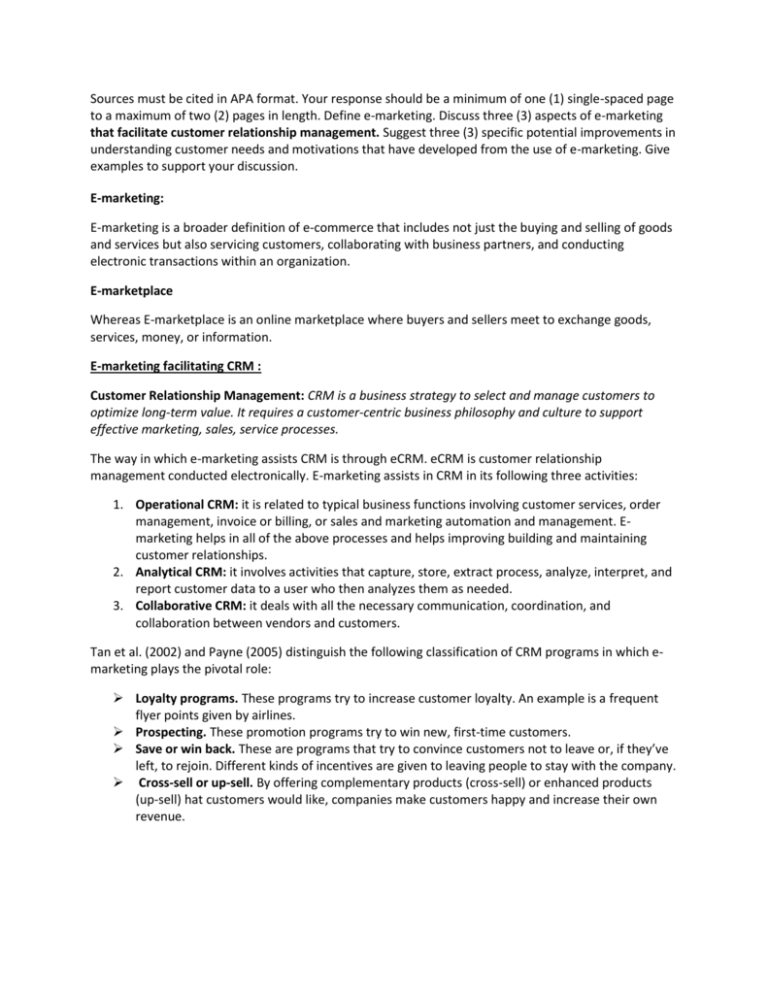
Sources must be cited in APA format. Your response should be a minimum of one (1) single-spaced page to a maximum of two (2) pages in length. Define e-marketing. Discuss three (3) aspects of e-marketing that facilitate customer relationship management. Suggest three (3) specific potential improvements in understanding customer needs and motivations that have developed from the use of e-marketing. Give examples to support your discussion. E-marketing: E-marketing is a broader definition of e-commerce that includes not just the buying and selling of goods and services but also servicing customers, collaborating with business partners, and conducting electronic transactions within an organization. E-marketplace Whereas E-marketplace is an online marketplace where buyers and sellers meet to exchange goods, services, money, or information. E-marketing facilitating CRM : Customer Relationship Management: CRM is a business strategy to select and manage customers to optimize long-term value. It requires a customer-centric business philosophy and culture to support effective marketing, sales, service processes. The way in which e-marketing assists CRM is through eCRM. eCRM is customer relationship management conducted electronically. E-marketing assists in CRM in its following three activities: 1. Operational CRM: it is related to typical business functions involving customer services, order management, invoice or billing, or sales and marketing automation and management. Emarketing helps in all of the above processes and helps improving building and maintaining customer relationships. 2. Analytical CRM: it involves activities that capture, store, extract process, analyze, interpret, and report customer data to a user who then analyzes them as needed. 3. Collaborative CRM: it deals with all the necessary communication, coordination, and collaboration between vendors and customers. Tan et al. (2002) and Payne (2005) distinguish the following classification of CRM programs in which emarketing plays the pivotal role: Loyalty programs. These programs try to increase customer loyalty. An example is a frequent flyer points given by airlines. Prospecting. These promotion programs try to win new, first-time customers. Save or win back. These are programs that try to convince customers not to leave or, if they’ve left, to rejoin. Different kinds of incentives are given to leaving people to stay with the company. Cross-sell or up-sell. By offering complementary products (cross-sell) or enhanced products (up-sell) hat customers would like, companies make customers happy and increase their own revenue. Improvement in understanding customer needs and motivations from using e-marketing: Following are the ways in which e-marketing has improved the company’s understanding about their customers’ needs and motivations: 1. Personalization in e-marketing: Personalization refers to the matching of services, products, and advertising content to individuals and their preferences. The matching process depends upon what company knows about the individual consumer. Better understanding of consumers eventually leads to better products and service online and therefore facilitates customer relationship management. Within e-marketing, companies generate user profile which defines customer preferences, behaviors, and demographics. These user profiles can be generated in several ways. Following are the major strategies used to compile user profiles in e-marketing. Solicit information directly from user: usually done with the help of questionnaires and interviews Observe what people are doing online: Usually done with the help of cookie. Cookie is a data file that is placed n a user’s hard drive by a remote web server, frequently without disclosure or the user’s consent that collects information about the user’s activities at a site. Build from previous purchase patterns: For example Amazon.com builds customer profiles to recommend books. Make inferences: Infer from information provided by customers on other issues or by analyzing similar customers. 2. Customer analysis: e-marketing uses analytics CRM which refers to the use of business analytics techniques and business intelligence such as data mining and online analytic processing to CRM applications. Many sources of customer data including real-time Web movement activities and real-time customer interaction and activities in POS and even while playing slot machines in casinos. The large amount of data is processed and stored in data warehouse and/or in a data mart. Several types of analytical tools can be applied to create, for example, customer profiles used for planning advertising and marketing campaigns. 3. Finer customer segmentation groupings: e-marketing provides organizations with a better opportunity to serve markets b segmenting the total customer markets n a finer way and then catering to those segments and markets with personalized attention, products and services. Sources must be cited in APA format. Your response should be a minimum of one (1) single-spaced page to a maximum of two (2) pages in length. Explain what segmentation variables are and then discuss the four (4) groups of segmentation variables. Then, for each of the following products, identify two (2) possible segmentation variables and briefly describe why you chose each one. a. Shoes b. Cameras c. Magazines d. Hotel Accommodations e. Recreational Vehicles

